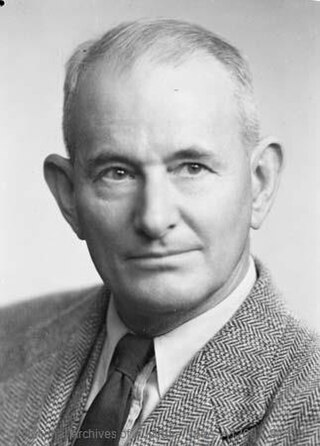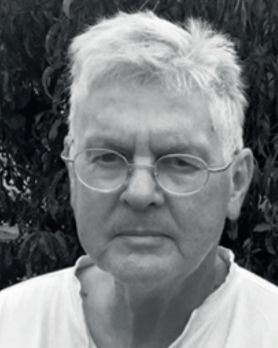
The University of New South Wales (UNSW), also known as UNSW Sydney, is a public research university based in Sydney, New South Wales, Australia. It is one of the founding members of Group of Eight, a coalition of Australian research-intensive universities.
Keith Windschuttle is an Australian historian. He was appointed to the board of the Australian Broadcasting Corporation in 2006. He was editor of Quadrant from 2007 to 2015 when he became chair of the board and editor-in-chief. He was the publisher of Macleay Press, which operated from 1994 to 2010.
Dr Ron Brunton is an Australian anthropologist. He was the director of Encompass Research Pty Ltd, and was on the Board of the public broadcaster, the Australian Broadcasting Corporation (ABC) for a five-year term from 1 May 2003.

Marcia Lynne Langton is an Aboriginal Australian activist and academic. As of 2022 she is the Redmond Barry Distinguished Professor at the Melbourne School of Population and Global Health, University of Melbourne. Langton is known for her activism in the Indigenous rights arena.
William Edward Hanley Stanner CMG, often cited as W.E.H. Stanner, was an Australian anthropologist who worked extensively with Indigenous Australians. Stanner had a varied career that also included journalism in the 1930s, military service in World War II, and political advice on colonial policy in Africa and the South Pacific in the post-war period.

Charles Pearcy Mountford OBE was an Australian anthropologist and photographer. He is known for his pioneering work on Indigenous Australians and his depictions and descriptions of their art. He also led the American-Australian Scientific Expedition to Arnhem Land.

The Western Desert cultural bloc is a cultural region in central Australia covering about 600,000 square kilometres (230,000 sq mi), used to describe a group of linguistically and culturally similar Aboriginal Australian nations.
Diane Robin (Di) Bell is an Australian feminist anthropologist, author and activist. She is Professor Emerita of Anthropology at the George Washington University in Washington, D.C, USA and Distinguished Honorary Professor of Anthropology at the Australian National University, Canberra. Her work focuses on the Aboriginal people of Australia, Indigenous land rights, human rights, Indigenous religions, violence against women, and on environmental issues.

Peter Sutton FASSA is an Australian social anthropologist and linguist who has, since 1969, contributed to: recording Australian Aboriginal languages; promoting Australian Aboriginal art; mapping Australian Aboriginal cultural landscapes; and increasing societies' general understanding of contemporary Australian Aboriginal social structures and systems of land tenure.
The Indigenous Law Centre (ILC), formerly the Aboriginal Law Research Unit and Aboriginal Law Centre, is part of the Law Faculty at the University of New South Wales. It develops and coordinates research, teaching and information services in the multi-disciplinary area of Indigenous peoples and the law, and publishes two major journals: the Australian Indigenous Law Review and the Indigenous Law Bulletin. It is the only Indigenous law research centre in Australia.
Paul S.C. Taçon is an anthropologist and archaeologist based in Australia. He has conducted field work in Australia, Botswana, Cambodia, Canada, China, India, Malaysia, Myanmar, Thailand, South Africa and the United States. In 2011, he was appointed the first chair in Rock Art research at Griffith University on the Gold Coast, Australia. Taçon has made several key archaeological discoveries in Australia, most notably in western Arnhem Land (NT) and Wollemi National Park (NSW). These include the earliest rock art evidence of warfare in the world, the origins of the Rainbow Serpent, significant new Arnhem Land rock art sites, rock art discoveries in Wollemi National Park and the oldest rock paintings of Southeast Asian watercraft in Australia.
Professor Jon Charles Altman is a social scientist with a disciplinary focus on anthropology and economics. He is an emeritus professor of the Australian National University currently affiliated to the Regulatory Institutions Network (RegNet), College of Asia and the Pacific, ANU. He was the founding director of the Centre for Aboriginal Economic Policy Research (CAEPR) at the Australian National University and then a research professor there until 2014 when he retired. He is a Fellow of the Academy of the Social Sciences in Australia and an Honorary Fellow of the Royal Society of New Zealand. From 2008 to 2013 he was an Australian Research Council Australian Professorial Fellow. In late 2015 Altman moved to Melbourne to take up an appointment from 1 February 2016 as research professor at the Alfred Deakin Institute for Citizenship and Globalization at Deakin University.

Sarah Kenderdine is a professor of Digital Museology at the École polytechnique fédérale de Lausanne (EPFL), Switzerland, since 2017. She leads the laboratory for experimental museology (eM+), exploring the convergence of aesthetic practice, visual analytics and cultural data. Kenderdine develops interactive and immersive experiences for museums and galleries, often employing interactive cinema and augmented reality. She is a New Zealander and was born on the 2 January 1966 in Sydney.

Megan Jane Davis is an Aboriginal Australian activist and international human rights lawyer. She was the first Indigenous Australian to sit on a United Nations body, and was Chair of the UN Permanent Forum on Indigenous Issues. Davis is Pro Vice-Chancellor, Indigenous, and Balnaves Chair in Constitutional Law at the University of New South Wales. She is especially known for her work on the Uluru Statement from the Heart.
Diane Joyce Austin-Broos is an anthropologist from Australia. She is a Professor Emeritus at the University of Sydney; her major research areas are Jamaica and Central Australia.
Brenda L. Croft is an Aboriginal Australian artist, curator, writer, and educator working across contemporary Indigenous and mainstream arts and cultural sectors. Croft was a founding member of the Boomalli Aboriginal Artists Cooperative in 1987.
Jonathan Jones is a Sydney-based Indigenous Australian artist who has made extensive contributions to the contemporary Aboriginal art scene in Australia. The Art Gallery of NSW and the National Gallery of Victoria have acquired works by Jones. Jones was a recipient of a Sidney Myer Creative Fellowship, an award of A$160,000 given to mid-career creatives and thought leaders.
Gillian Cowlishaw is a New Zealand-born anthropologist whose ethnographic research with Aboriginal Australians, investigates local cultures, histories and the relationship between settler colonialists and Indigenous people.
Paul Christopher Memmott is an Australian architect, anthropologist, academic and the Director of the Aboriginal Environments Research Centre at the University of Queensland. He is an expert on topics related to Indigenous architecture and vernacular architecture, housing, homelessness and overcrowding.
Howard Morphy is a British anthropologist who has conducted extensive fieldwork in northern Australia, mainly among the Yolngu people. He was founding director of the Research School of Humanities and the Arts at the Australian National University and is currently a distinguished professor of anthropology.







